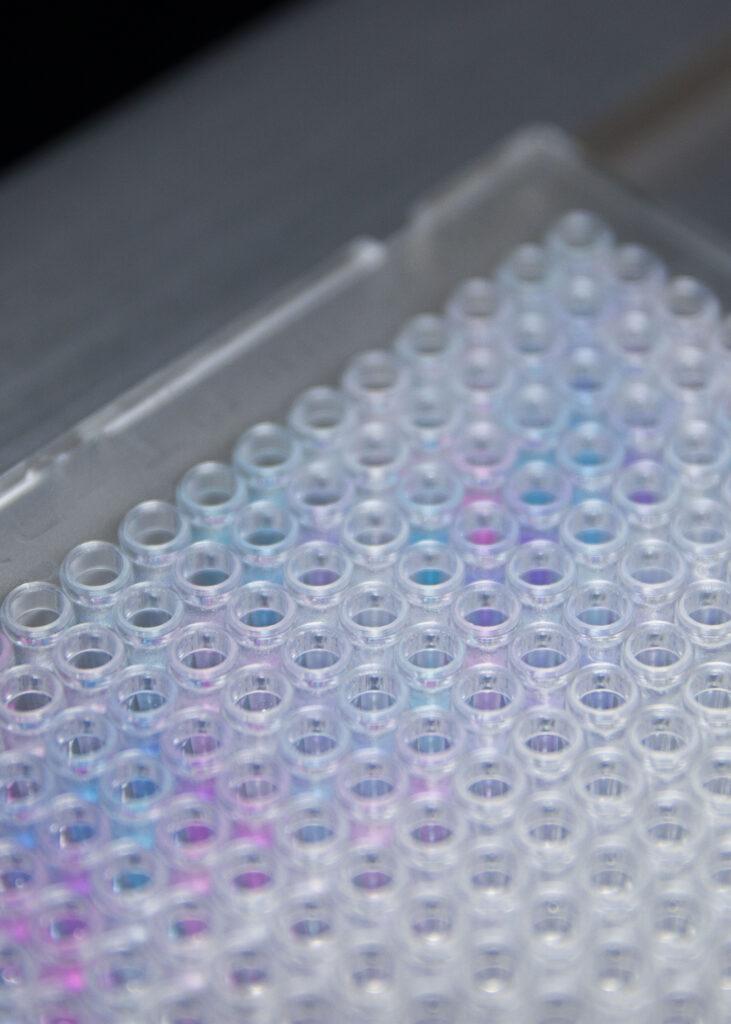Small molecule microarray (SMM) screening is at the forefront of pharmaceutical innovation, offering a distinct platform for discovering novel therapeutics. This technique systematically arranges compounds and fragments into a microarray. In this way, a biological target of interest can be interrogated with a whole compound library simultaneously. The evolution of SMM screening indicates an important shift from laborious assay approaches to this distinct technique, which is complementary to other high-throughput screening options for drug discovery.
At its core, SMM screening is engineered for simplicity and speed. Researchers deploy this technology to navigate the expansive chemical space in search of interactions with proteins, nucleic acids, and other macromolecular structures integral to disease pathophysiology. The miniaturised and multiplexed microarray format accelerates the identification of ligands with the desired affinity and selectivity towards biological targets, some of which have been previously deemed inaccessible or ‘undruggable’ such as RNA targets.
Integrating SMM into drug discovery pipelines has catalysed the identification of small molecule leads that modulate biomolecular functions.
What you’ll learn in this editorial:
- The Evolution of Smal Molecule Microarray Screening
- The Technology of Small Molecule Microarray Screening
The Evolution of Small Molecule Microarray Screening
Small molecule microarray (SMM) screening emerged as a promising technology at the turn of the century, assisting with discovery-driven research across various disciplines, including chemistry, biology, and pharmacology. The first decade of SMM matured from a novel concept to a robust screening platform capable of harnessing diverse chemical libraries for broad applications[1].
The Koehler Lab is recognised for pioneering the development of SMM screening. Key protocols published by the lab include a 2006 Nature Protocol for manufacturing arrays for isocyanate-mediated capture of small molecule libraries, a 2012 Methods in Molecular Biology protocol on array design and control screening, and a 2015 Current Protocol in Chemical Biology for screening targets from cell lysates[2].
SMMs are manufactured by methodically depositing stock solutions of compounds onto functionalised substrates, such as glass microscope slides, creating arrays for subsequent incubation with target proteins or RNA. This innovative method contrasts with traditional high-throughput screening (HTS) methods. Where HTS can rely on discrete wells for individual assays, often requiring large volumes of reagents, SMM simultaneously interrogates tens of thousands of potential interactions on a single slide in a single step, using minimal reagent volumes [3,4].
Crucially, SMMs are scalable and versatile, providing a general platform for identifying interactions leading to protein function modulation. The technology has been applied to identify small molecules that engage with challenging targets like proteases, kinases, and even ‘undruggable’ factors such as the extracellular growth factor Sonic hedgehog (Shh), or RNA. This leap in capability has been powered by innovations in array manufacturing, such as fluorous-based homogeneous display and isocyanate-based covalent attachment, the latter of which allows for the incorporation of a broader range of compounds, including those not originally synthesised for immobilisation [4].
The development and application of SMM has broadened horizons for drug discovery, allowing for more rapid, efficient, and comprehensive scanning of the potential therapeutic landscape.
The Technology of SMM Screening
The technological foundation of SMM screening is built on the precise arrangement and immobilisation of chemical compounds on a solid substrate. The process begins with robotically depositing stock solutions of compounds onto specially prepared substrates like functionalised glass slides. These arrays are then exposed to proteins of interest, with potential interactions typically detected using fluorescently labelled antibodies and fluorescence slide scanning.
Key to this process is the immobilisation strategy. Techniques such as fluorous-based homogeneous display and isocyanate-based covalent attachment fix the small molecules onto the substrate. The latter strategy is particularly significant as it allows the integration of a wide array of compounds, including those not specifically synthesised for immobilisation, like FDA-approved drugs and natural products. At Arrayjet, we’ve worked with academic partners to develop our own proprietary isocyanate surface chemistry to maximise the quality of our arrays. This method ensures that a comprehensive selection of bioactive molecules can be screened in parallel, expediting the discovery of protein modulators and therapeutic leads[1].
Interested in SMM Screening?
At Arrayjet, we’re committed to advancing drug discovery through our state-of-the-art Mercury instrument—a pinnacle of microarray printing technology ideal for high-throughput small molecule screening. Our platform integrates advanced microarray printing, proprietary isocyanate slides, and proven, optimised protocols, all supported by our experienced in-house experts. This combination, enhanced by our partnership with Chemspace for extensive compound libraries, delivers unparalleled efficiency and throughput in our services. We understand the importance of cost-effectiveness in compound library screening, and our solutions, including custom microarray services and our pioneering spot-on-spot platform ArrayPlex™, are tailored to meet these needs. We take pride in the tools we provide to our clients and the exciting new science they will undoubtedly uncover.
References:
- Balaratnam, Sumirtha, et al. “Investigating the NRAS 5’UTR as a Target for Small Molecules.” Cell Chemical Biology, vol. 30, 2023.
- Koehler Lab. “Protocols.” Koehler Lab, 2023.
- Yang, Mo et al. “Discovery of Small Molecules Targeting the Frameshifting Element RNA in SARS-CoV-2 Viral Genome.” ACS Medicinal Chemistry Letters vol. 14, 2023.
- Pomerantz, William C.K. “Development of Oligomeric Mannose-6-phosphonate Conjugates for Targeted Protein Degradation”. ACS Medicinal Chemistry Letters, vol. 14, 2023.


